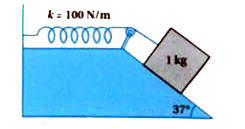Describe classification of waves in detail with examples.Solution in Gujrati
All types of waves can be classified into following three categories.
(1) Mechanical Waves : "The waves which require an elastic medium for their propagation, are called mechanical waves.
For example : String waves, spring waves, water waves, sound waves seismic waves (propagating on the ground during earthquake) are all mechanical waves.
Here waves propagate because of elasticity property of medium.
(2) Electromagnetic Waves OR
Non-mechanical Waves : "The waves which do not require any medium for their propagation, are called non-mechanical waves. They are also called electromagnetic waves (because during their propagation, electric and magnetic fields oscillate periodically in mutually perpendicular directions in a plane perpendicular to direction of propagation of wave)".
For example, radiowaves, infrared light waves, visible light waves, ultraviolet light waves, X-ray and gamma rays are the examples of electromagnetic or nonmechanical waves. They can propagate in vacuum also. The light emitted from stars very far from us (hundreds of light years away from us) reaches to us after passing through vacuum in the inter - stellar space.
All types of electromagnetic waves have same speed in vacuum with a valuec=2.99792458×108m/s (Which is a well known physical constant known as velocity of light in vacuum)
(3) Matter Waves : It has been proved experimentally that, "When a fundamental particle of mass m, moves with a velocity v, its motion can be described very well by a wave of wavelength λ=hmv
(Where h = Planck.s constant =6.625×10−34(Js). Such waves are called "Matter Waves". (These waves were predicted by Louis De Broglie and so they are also known as De-Broglie waves).
Matter waves represent the motion of atom (smallest part of an element), molecule (smallest part of a compound, fundamental particles like electron, proton and neutron (which take part in the constitution of any matter). They interact and show their effect, quite similar to those shown by mechanical or non-mechanical waves. They have been employed in many devices, from basic to modern technology, for example stream of fast moving electrons is employed in electron microscope (which gives an image with magnification and clarity, greater than that produced by any light).
Topper's Solved these Questions
- BOOK - KUMAR PRAKASHANCHAPTER - WAVESEXERCISE - SECTION-A TRY YOUR SELF63videos
WAVES
- BOOK - KUMAR PRAKASHANCHAPTER - WAVESEXERCISE - SECTION-B (Numericals) (Numerical From Textual Illustrations)14videos
WAVES
- BOOK - KUMAR PRAKASHANCHAPTER - UNITS AND MEASUREMENTEXERCISE - Section -F (Questions from Module )20videos
UNITS AND MEASUREMENT
- BOOK - KUMAR PRAKASHANCHAPTER - WORK, ENERGY AND POWER EXERCISE - QUESTION PAPER (SECTION - D)1videos
WORK, ENERGY AND POWER
Similar Questions
What are called waves ? Mention their importance.
09:16View SolutionGiven below are some examples of wave motion. State in each case if the wave motion is transverse, longitudinal or a combination of both:
(a) Motion of a kink in a longitudinal spring produced by displacing one end of the spring sideways.
(b) Waves produced in a cylinder containing a liquid by moving its piston back and forth.
(c ) Waves produced by a motorboat sailing in water.
(d) Ultrasonic waves in air produced by a vibrating quartz crystal.05:50View SolutionIf the error in measurement of radius of a shpere is 2% then the error in determination of volume of the sphere will be …………
11:03View SolutionA 1 kg block situated on a rough incline is connected to a spring constant 100Nm−1 as shown in figure . The block is released from rest with the spring in the unstretched position . The block moves 10 cm down the incline before coming to rest . Find the coefficient of friction between the block and the incline .Assume that the spring has a negligible mass and the pulley is frictionless.
 04:42View Solution
04:42View SolutionWith the help of examples describe the classification of essential elements based on the function they perform.
05:36View SolutionDescribe general characters, classification and example of old division Spermatophyta.
03:31View SolutionExplain in detail the classification of Business Activities on the basis of their function.
05:47View Solutionहारमोनो के वर्गीकरण को विस्तृत रूप में समझाइए।
04:26View Solutionहाइड्रोकार्बनों के वर्गीकरण का वर्णन कीजिए तथा प्रत्येक प्रकार के दो उदाहरण भी दीजिए।
07:24View Solutionवर्गीकरण की तीन-डोमेन पद्धति बताइए
04:26View SolutionExplain in detail about systematic errors and its classification.
07:24View Solutionउपयोगिता के आधार पर पादप रेशो का वर्गीकरण देते हुए, वस्त्र रेशो का विस्तार से वर्णन कीजिए |
View Solutionएन्जाइम्स के वर्गीकरण को विस्तारपूर्वक समझाइये।
03:01View Solutionउपयोगिता के आधार पर पादप रेशो का वर्गीकरण देते हुए ,वस्त्र रेशो का विस्तार वर्णन कीजिए।
02:20View Solutionएन्जाइम के वर्गीकरण को विस्तारपूर्वक समझाइए।
04:36View Solution

